LOCAL MATTERS INVESTIGATING INFLUENCE
A look into nationwide corporate concentration, consolidation and power and its impact on the local business community on Cape Cod
Presented by
Authored by Amanda Converse

A look into nationwide corporate concentration, consolidation and power and its impact on the local business community on Cape Cod
Presented by
Authored by Amanda Converse
When Love Live Local became a nonprofit organization in early 2020, we dedicated ourselves to communicating the importance of supporting small business and adopted the mission of fostering an economically sustainable future for Cape Cod. Our aim is to work with local businesses to achieve their economic goals and communicate their importance to the Cape Cod community. Since then, we have produced research that definitively shows that Cape Cod local businesses contribute much more to our community than their corporate counterparts. Yet, despite their proven importance to local economies and community vitality, small businesses across the country face challenges to their survival, not the least of which is corporate concentration in most economic sectors; now most industries are dominated by a handful of corporations.
In 2020, at the height of the pandemic, we produced our first Local Matters report titled Measuring Impact, which quantified and assessed the impact of Cape Cod’s locally owned businesses
on our local economy, as compared to national chains and online corporations. The analysis performed by consulting firm Civic Economic found that local retailers and restaurants keep about 2-4 times as much money in the local economy as their national chain competitors, and that online retailers return virtually $0 to local communities. Essentially dollars spent at locally owned businesses generate more local prosperity and shifting any amount of consumer spending to locally owned businesses results in increased economic activity and stronger economic sustainability.
While chain stores and restaurants and online sellers extract locally generated revenues from the community with each nightly bank transaction and click of the mouse, independents are creating a virtuous cycle of local spending. The extra dollars in the local economy produce more jobs for residents, extra tax revenues for local governments, more investment in commercial and residential districts, and enhanced support for local nonprofits. In short, these businesses create stronger and healthier communities to live, work and visit.
The primary purpose of the second Local Matters report, which was made possible by our Mission Supporters Cape Cod Five, Mid-Cape Home Centers, Nauset Disposal and Duffy Health Center, was to study a different kind of impact - the type of impact the pervasive corporate consolidation, concentration and power in the U.S. economy has on our local businesses right here on Cape Cod.
Love Live Local is a Cape Cod organization dedicated to community advocacy and educating consumers on the importance of shopping local. Our mission is to foster an economically sustainable, creative, and exciting future for the Cape and help all those who love this place participate in keeping it special.
Our aim is to work with local businesses to achieve their economic goals and communicate their importance to the sustainability of Cape Cod as a whole, as well as foster community connection among individuals and organizations to improve the overall health of our region.
We achieve this through collaboration with small local businesses and organizations, producing community events, creating annual publications highlighting the local business community, and representing local brands and makers in our retail store.
We also achieve our mission through research and evaluation of the challenges and issues impacting the small local businesses in our community.
Amanda Converse, the author of this report, is the co-founder and CEO of Love Live Local. Amanda’s passion for local business arose when she returned to Cape Cod after receiving her Master’s in Public Policy from The George Washington University in Washington, DC, and began working for the Hyannis Main Street Business Improvement District, where she helped create, maintain, and promote a vibrant downtown made up of over 120 locally owned businesses.
Soon after Amanda tried her hand at running her own businesses and opened Shift, an eco-clothing and green home goods boutique, as well as launched two publications that highlighted local businesses and their contributions to the community. It was through that work and her experience as a small business owner, she came to appreciate that small businesses are the backbone of local economies everywhere, and they need support communicating that message to consumers and policymakers. She closed her businesses in 2019 to focus full time on the non-profit efforts of Love Live Local.
The focus of this report is on the show of corporate power in eight different industries: retail, food, restaurants, banking, broadband, waste removal, pharmacies, and newspapers. Extensive
research and literature reviews were completed on each of the economic sectors to identify the major issues corporate concentration has caused over the past four decades, as well as what people and policymakers at all levels can do to mitigate the negative impacts.
We then connected with local business owners and community members for their input and experience in each of these sectors to provide a more localized perspective and to gauge the impact corporate consolidation has had right here on Cape Cod.
Despite the illusion of too many choices when going to buy office supplies, deciding on a rental car, and even choosing Halloween candy nearly every marketplace in America is vastly more consolidated than a generation ago. Today, two firms control 69% of the entire office supplies market; three corporations now dominate the rental car business; and two companies control 75% of the candy market in America [1] . This type of corporate concentration doesn’t stop there. You see it online as Google and Yahoo capture 82% of internet searches, and in travel search companies where there are two independent travel search companies - Expedia and Priceline [2]. In transportation, recent mergers have left four airline carriers in the United States with control over 80% of the market and seven large railroads control much of that industry (there used to be over 30). In healthcare, three companies dominate the health insurance market, three large firms produce most of the pacemaker supply, and one company, Luxottica, dominates manufacturing of and retail for eyeglasses for the U.S. market. Many products from
diapers to soda to lightbulbs to tires [3] to refrigerators, glass bottles, mattresses, lab equipment, cowboy boots and champagne [4] are dominated by large players that essentially control the market.
Independent businesses are significant drivers of competition, jobs, and economic growth in American communities. But by convincing consumers and policy makers they are more convenient, efficient, and affordable, large corporations have been negatively impacting small businesses for decades, having a profound effect on local communities across the country and right here on Cape Cod.
But these assertions that bigger is better don’t always pan out. A report by the Institute for Local Self Reliance states “this type of concentrated economic power has reconfigured multiple sectors in ways that have both weakened the broader U.S. economy, by stifling investment and innovation, and harmed working people and communities.” [5] And author David Dayen writes, “the number of start-up businesses has plummeted since the late 1970s.
Products and services grow worse, and companies with little competition have no incentive to improve them. Concentrated supply chains are more vulnerable to disruption, as the coronavirus crisis has shown. Fewer firms shovel more economic gains to smaller groups of executives. Politics becomes unbalanced as monopolists bend lawmakers and regulators to their will.” [6]
What’s more, recent economic research has shown that corporate concentration makes it almost impossible for new companies to enter and compete in many markets and is one of the reasons for stagnant wage growth. With many industries now dominated by just a few giant companies, and fewer new businesses starting, there’s less competition for labor, which allows companies to hold down wages [7] . The research has also shown that in a concentrated market companies [8] can and will manipulate prices, reduce supply, and do everything they can to remove smaller competitors. Studies estimate that corporate concentration costs the average household between $5000-$50,000 a year in lost purchas -
ing power due to lower wages and higher prices [9] .
It’s true that consumer choices play a role in how this all plays out, but throughout history policy decisions made at every level of government have determined whether there is equal opportunity for small businesses against their heavily capitalized and highly influential corporate counterparts. In fact, the period that followed the 1930s when federal policy of addressing monopolies was at its strongest was the most stable and prosperous in America. Between the 1930s and 1970s wages rose steadily, the middle class was built, income inequality declined, and the overall number of businesses rose. But due to policy decisions made in the last four decades, corporate concentration has reached a level today not seen since years before the Great Depression, when industrial monopolies dominated the American landscape and the American economy. This, in turn, has shifted consumer purchasing power away from our small businesses on Main Streets towards large companies held by Wall Street, which then creates more corporate power. And the cycle continues.
Small businesses across the country are impacted by the disparities that corporate concentration creates, including right here on Cape Cod. Our local businesses are not afraid of competition or hard work. In fact, they thrive on it, knowing that they offer better quality products, superior customer service, and a deep commitment to the Cape Cod community. Their dreams of being entrepreneurs go beyond their own doors – owning a small business is their way of adding vibrancy and having a meaningful connection to their community. For local companies it is about more than just the bottom line and returns for shareholders. It is about providing an essential service, jobs, and charitable works for a place they love. But it’s hard for them to compete when the playing field is uneven, and policymakers and consumers don’t recognize it.
This research report looks at eight economic sectors, their current state of consolidation, how small businesses in those sectors have been impacted by the trends of the last forty years, as well as how both consumers and policy makers can mitigate and begin
to reverse those impacts. It explores pharmacy benefit managers, which oversee the sale and administration of drugs like the one owned by CVS, and how they manipulate prices on pharmaceutical drugs, as well as at the control that Google and Facebook have over the internet advertising business, negatively impacting local newspapers. It examines the impact that vertical integration has had on small waste hauling companies as they try to compete with those who also own the landfills, and how the loss of local banks has led to fewer startups. It also provides context for how corporate third-party delivery apps are price gouging independent restaurants, and how consolidation in food and farming can lead to price increases, as well as how the dominance of retailers like WalMart, Amazon, Home Depot and Lowe’s has cost many small businesses their livelihoods and stifled innovation. And it explores the detrimental impacts of two corporations controlling the broadband market and our access to the internet.
Big box retailers and ecommerce giants have one aim: to gain as much market share as possible, leaving smaller competitors like local boutiques, independent bookstores, markets, corner stores and specialty shops with as little as possible. Their success in this aim is evident. Today, nationwide, Walmart captures $1 in $4 that Americans spend on groceries [10], Home Depot and Lowe’s together now have about half of home improvement sales [11], and most shoppers looking to buy something online begin their search on Amazon, and the site captures about 50% of online sales [12] .
The result of increasing concentration is a system that benefits a select few at the expense of everyone else, including consumers, workers, and independent retailers and suppliers. Between 2007 and 2017, the number of small retailers fell by 65,000 [13]. About 40% of the nation’s small apparel, toy, and sporting goods makers disappeared, along with about one-third of small book publishers. It is estimated that 80,000 retail stores will shut across the country by 2026 [14] .

Dominant chains like Walmart, Target, Home Depot, Lowe’s, Barnes & Noble, Office Depot and Best Buy, all wield tremendous economic power to the detriment of independent retailers and producers. Corporations use their massive buying power to dictate terms and conditions to suppliers, including negotiating priority with shipments and lower prices and to shut independent stores out of certain supply
chains, limiting free market competition. Since its founding in 1994, Amazon has also engaged in exclusionary, anti-competitive schemes to gain market power and illegally monopolize the e-commerce retail market. The company notoriously lost billions of dollars for years by selling products, like books, below cost to kill their competition and expand market share. The strategy only worked because their Wall Street investors accepted little or no profit in exchange for rapid market growth.
It is estimated that 80,000 retail stores will shut across the country by 2026. Any loss of local retailers on Cape Cod would be devastating, as they return a total of 50% of all their revenue to the local economy – their corporate competitors return between 0-13.6%.
And their predatory tactics have paid off. From 2000 to 2018, Amazon’s net income went from a loss of $1.411 billion to a profit of $10.073 billion [15] .
At the same time most small businesses see the company as a threat to their continued survival, retailers and brands feel they must sell on its site if they want to reach much of the online market. Those small businesses that do sell on Amazon are met with more predatory practices such as collecting sellers’ data about their sales, costs, and suppliers to create its own competing versions of their products, compelling sellers to buy its warehousing and shipping services, blocking sellers from connecting with customers directly, and by making it harder for them to generate sales
unless they purchase additional Amazon services, including advertising. What’s more, Amazon’s third-party sellers have reported having their accounts suspended arbitrarily and their inventory and cash balances seized with very little opportunity to reach customer service to gain an understanding of the issue [16] .
Amazon keeps an average of 30% of each sale independent businesses make on its site making it nearly impossible to sustain a profitable business. Because of the rising cost of these gatekeeper fees, the vast majority of those who start selling on Amazon’s site fail within a few years.
Right here on Cape Cod any loss of local retailers would be devastating, as they return a total of 50% of all their
revenue to the local economy, whereas national chain retail stores recirculate an average of 13.6% of all revenue within the local markets that host its stores. Purchases from online retailers not based on Cape Cod return virtually no money to the local community [17] .
Thank you to Sid Snow from Snow’s Home & Garden, Brian and Monila Junkins from Friends Marketplace, Crystal Pieschel from Mid-Cape Home Centers, and an anonymous local Amazon seller (name kept out of the report out of fear of retaliation from Amazon) for the time and insight they provided for this sector study. To read more from our interviews with them visit lovelivelocal.com/ corporate-consolidation.
Walking into a grocery store in most communities across the U.S. it is easy to be overwhelmed by the sheer number of choices shoppers have for food items from produce and meat to milk and bread. What many people do not realize is that most of the items in the grocery store aisles are produced by a handful of mega corporations that dominate the industry [18]. Tyson, Pilgrim’s Pride and Perdue - are responsible for buying and selling every chicken in the $90 billion
American industry. Four corporations - Cargill, Archer-Daniels Midland, Bunge, and Louis Dreyfus - control close to 90% of the global grain trading business, and now four firms control about 85% of the national beef packing market, 85% of soybean processing, and 63% of pork packing. What’s more, Kraft Heinz sells 60% of all ketchup, PepsiCo sells nearly 60% of all chips, McCormick sells almost half of all spices, and Dean Foods owns most of the brands in the dairy section, and the list goes on [19] .
This is not, however, where the corporate influence and control over U.S. food markets ends.
Over the last forty years the American food supply chain, the inputs and outputs of food production have become concentrated in the hands of a shrinking number of giant multinational corporations. Monsanto owns most of
the seeds farmers plant, the fertilizers they use for cultivation, and the pesticides they apply to their crops. And John Deere not only dominates the farm equipment and machinery market, but also forbids farmers from editing tractor software, which means they cannot change engine settings, can’t retrofit old equipment with new features, and can’t modify their tractors to meet new environmental standards without going through the manufacturer [20] .

What many people do not realize is that most of the items in the grocery store aisles are produced by a handful of mega corporations that dominate the industry… this devastates local economies and completely discourages the next generation of farmers and fishermen.
This kind of domination in the market has had a detrimental impact on medium-sized and small farms like those located on Cape Cod, the food that makes it to market, as well as puts the security of the whole system at risk. When just a few companies control the channels by which food products make it to market, it leaves farmers on land and sea with limited options with whom to do business and enables the corporations to dictate price. In recent years allegations of price fixing have been made against beef, tuna, chicken, turkey, egg, pork, and peanut conglomerates, where farmers have been paid a lot less for the product than they have previously, while consumers are charged more [21] .
From 2013 to 2018, net farm income dropped 52%; farmers are now shouldering more than $400 billion in debt [22] , and their communities are losing their economic and cultural foundation. And unfortunately, government farm subsidies aren’t going to save them since between 1995 through 2014, almost
90% of agricultural subsidies went to the largest 20% of farms [23] . These large industries also attract large private equity firms and foreign companies, who buy up farmland and fishing quotas and tend to lack transparency, and take jobs and resources out of rural communities, accelerating social and economic decline and suppressing the growth of independent businesses [24] .
This corporate concentration devastates local economies and completely discourages the next generation of farmers and fishermen. There is concern that small family-run businesses like those found on Cape Cod are going to be fewer and farther between as big corporate interests take more of an interest in the

fishing industry as they have in agriculture, even right here on Cape Cod.
Thank you to Gretel Norgeot, owner of Checkerberry Farms in Orleans and the Market Manager for the Orleans Farmers Market, Denice Lapierre from F/V Isabel and Lilee, Seth Rolbein from the Cape Cod Commercial Fishermen’s Alliance for the time and insight they provided for this sector study. To read more from our interviews with them visit lovelivelocal.com/ corporate-consolidation.
but in many places like Cape Cod, locally owned restaurants have been able to hold their own, as locals prefer to patronize restaurants owned and staffed by their friends and tourists seek to taste the local flavor.
As dining out became more popular in the second half of the twentieth century, large corporate entities sought to capitalize on this trend by proliferating national chain and fast-food restaurants in almost every community across the United States. Some independently owned restaurants lost that battle against cheap prices and government policies that favored the “big guys,”
But March 2020 brought something entirely new to their doors, as the coronavirus swept across America and restaurants were ordered closed or to operate at a reduced capacity. For many local restaurants, offering take-out and food delivery was their only way of making any sales.
On the surface, a third-party food delivery service seems like a great idea. An independent restaurant on its own typically cannot afford to offer delivery of its product to its customers. So, a company comes along and offers to provide the service for them. However,
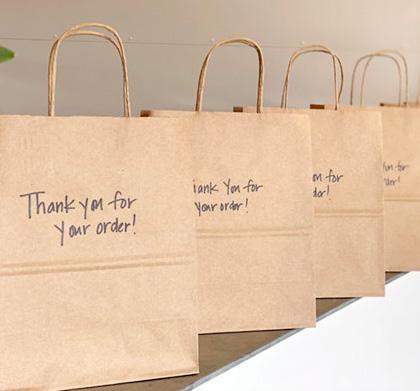
when the dominant third-party delivery app services – DoorDash, Grubhub and Uber Eats - own approximately 95% of the market share, they control the marketplace and set virtually any price they want for their services [25] .
Until COVID-19, restaurants did not really feel much need to engage [26] with third party delivery apps – take-out and delivery service was not where many of them were making their money or meeting customer demand. But in 2020,
Even before the pandemic, thirdparty delivery apps were charging exorbitant fees for their services, most of the time 30 percent or more of the cost of the order. In a business where profit margins are typically somewhere between 3-6 percent, this is simply unsustainable.
as many Americans spent much more time at home, sales for meal delivery services grew 36% year-over-year [27] . There is no doubt that much of that increase in consumer demand for food delivery service was driven by their desire to support small restaurants. The apps themselves created cleverly run marketing campaigns urging people to use their services to help local restaurants – and covered up their predatory, deceptive and problematic business practices that in fact do little but hurt independently owned restaurants. Even before the pandemic, third-party delivery apps were charging exorbitant fees for their services, most of the time 30% or more of the cost of the order [28]. In a business where profit margins are typically somewhere between 3-6% [29], this is simply unsustainable.
But the realities of this past year have pushed many Cape Cod restaurants to participate on these platforms, even though the costs are very prohibitive and could potentially hurt the businesses’ bottom line, they feel like they don’t have a choice if they want to reach customers online.
For those who have made the deliberate decision not to engage with DoorDash, GrubHub and UberEats, they are still falling prey to their predatory tactics, as the companies have pirated their menus and put them on their platforms without permission [30]. What’s more, the “takeout” or “delivery” button displayed on the official Google Business listing of a small restaurant will lead the user directly to Grubhub, instead of the restaurant’s own website.
The reality is corporate apps are not uplifting local businesses. They
are simply trying to extract as much wealth from local communities as they can to enrich their shareholders. The impact of this will be felt at the individual business level, but it will impact the local economy overall. Restaurants are economic drivers in the Cape Cod region as employers, taxpayers, and supporters of other local businesses, and are a huge part of what makes Cape Cod so special - protecting their viability from corporate power should be a priority.
Thank you to Mark Corliss, co-owner of Old King’s Coffeehouse and Jen Villa owner of The Local Juice and The West End for the time and insight they provided for this sector study. To read more from our interviews with them visit lovelivelocal.com/corporate-consolidation.
Banks play an important role in our everyday lives, from safeguarding our hard-earned money to managing non-cash payments. Data shows that small, local financial institutions charge lower prices for the same services and be more nimble, as they have far less bureaucracy than larger banks. They also know their communities, which means they lend to more startups and small businesses that a national institution might not take a chance on. And as
became evident after the 2008 financial crisis, they are more secure than corporate banks [31] .
Despite all this, corporate concentration has been eating away at the industry and the number of community banks and credit unions has sharply declined from the 1990s from close to 12,000 to about 3,000 today [32] .
Across the country this kind of corporate consolidation can have large implications. Not only can it lead to higher
fees for consumers, reduced access to banking services as larger banks shift their focus to their investment portfolios, and increased concerns about risk to the financial system, but for communities like Cape Cod where the economy relies almost entirely on small businesses and their success, the negative impact can be considerable.
In fact, research has shown that the closings of community banks have a prolonged negative impact on credit supply to local small businesses. This is because small banks are more likely to lend to small businesses, while larger banks prefer to make big loans with big payments to the largest US businesses. Although small and mid-size banks hold only 17% of industry assets, they supply 46% of all bank lending to new and

The number of community banks
and credit unions has sharply declined from the 1990s from close to 12,000 to about 3,000 today
growing businesses, whereas the largest banks - Bank of America, Citigroup, JP Morgan Chase, and Wells Fargo - hold 41% of assets but provide just 16% of small business lending [33] .
The COVID-19 global pandemic exposed many of the problems with the structure of the current banking system, notably when it came to getting Paycheck Protection Program funding to small businesses. In communities where local banks have a strong presence, the number of PPP loans made to small businesses greatly surpassed those regions that do not have a strong concentration of community financial institutions.
Barnstable County, which used to be home to a wide array of Cape Cod owned and operated local banks, is now
headquarters to only three local banks – Cape Cod 5, The Cooperative Bank of Cape Cod and Seamen’s Bank. Fortunately, these local banks remain viable, sound, and steadfast in their commitment to the local economy and community, and they were exemplary in their efforts to get Cape Cod’s small businesses the financial lifeline they needed to get them through the pandemic. Their teams worked non-stop to ensure that thousands of local, small businesses would have access to the program and keep money (to the tune of hundreds of millions of dollars) flowing through the economy.
Beyond the pandemic, local banks play a vital role in our local economy by helping people buy homes and start businesses by extending credit. Where
you choose to bank matters, and while banks of every size play an important role in the broader economy, for a place like Cape Cod, small financial institutions are key to the health of our community, which is why the trend of corporate consolidation in the banking industry should be cause for concern.
Thank you to Dorothy Savarese Chair and CEO of Cape Cod 5 and Bert Talerman co-President of Cape Cod 5, and Barbara Smith, Executive Vice President of The Cooperative Bank of Cape Cod for the time and insight they provided for this sector study. To read more from our interviews with them visit lovelivelocal.com/ corporate-consolidation.
There is perhaps no more glaringly obvious example of monopoly power on Cape Cod than the region’s internet service, which impacts the daily lives and pocketbooks of residents, as well as the operations and bottom lines of small businesses.
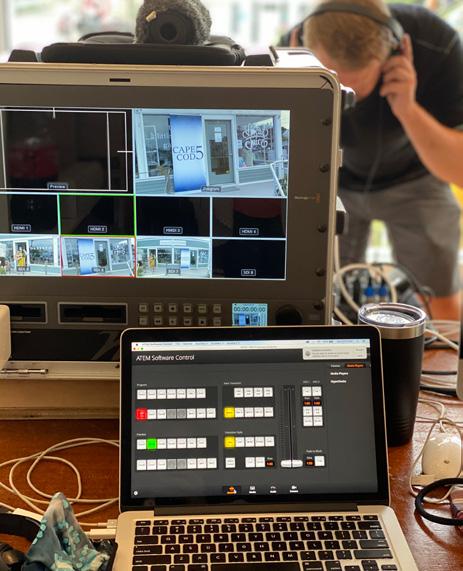
The evolution of internet connection from the dial-up service of the early days to one that enables people to be connected constantly (the most common
being cable modems, provided by cable television companies and DSL, provided by telephone companies) enables people access to many essential services like employment, education, and health care, as well as links businesses to additional customers and connects family and friends regardless of how far away they live. At this point the internet is as essential as electricity.
Yet the private sector has failed to deliver universal broadband connectivity. While large internet service providers (ISPs) are responsible for connecting much of the nation, their ultimate objective is to monopolize the markets through unchecked power and growth.
A report by the advocacy organization Common Cause breaks down this reality stating “most Americans have no meaningful choice when it comes to high-speed broadband. Without robust competition and public oversight, broadband providers have no incentive to upgrade their networks while increasing the prices they charge. Further, large providers have failed to invest in unprofitable areas, leaving parts of rural America unconnected and redlining
low-income neighborhoods in urban areas with substandard service.” [34] Nearly 50% of Americans lack reliable access to the internet [35] .
In the early days of the world wide web you would see thousands of ISPs competing with each other for customers - as late as 1998 there were still 4,500 providers in the market[36] - today, two cable companies, Comcast-Xfinity and Charter-Spectrum, control more than
Cape Cod has one internet provider99% of internet customers on the Cape are served by Comcast. This means they can get away with not upgrading their outdated infrastructure providing inferior service, and charging their local customers some of the highest prices in the country.
half of the broadband market, enabling poor service and dated broadband infrastructure, while trapping customers in a high-priced situation for which there is no alternative [37] .
Essentially, Cape Cod has one internet provider - 99% of internet customers on the Cape are served by Comcast. This means they can get away with not upgrading their outdated infrastructure (they operate on a cable based broadband internet, whereas fiber optic networks are a more modern technology with greater speed and reliability), providing inferior service, and charging their local customers some of the highest prices in the country [38]. Bottom line: the Cape’s internet service is slow, unreliable, and expensive.
On Cape Cod broadband customers experience inconsistent speeds and frequent outages, and the Comcast
network is not delivering the speeds that customers are paying for. Good download speeds are needed for viewing your social media feed, streaming music, and reading news articles and shared documents, whereas good upload speeds are needed for connecting to a school server, sending files, gaming, and for connecting to online video meetings. It is reported that “the most likely reason for the slow speeds is that the Comcast network configuration has not been modernized… the infrastructure is outdated, with no competition driving future upgrades.” [39]
Having poor internet connection doesn’t just cause individual frustrations and inconvenience when a Zoom call is dropped or you can’t binge Netflix. Not having fast, affordable, and reliable internet has a community-wide impact. Studies continue to show that access to
high-quality broadband boosts property values and contributes to economic vitality [40]. According to Sean Gonsalves, senior reporter, editor, and researcher for the Institute for Local Self Reliance Community Broadband Networks Initiative, “broadband impacts real estate, business, civic engagement, telehealth, economic development, schools, and government operating costs… it creates more resilient communities.” This will influence both businesses and residents on where they want to live and work“efficiency, speed and reliability – internet connectivity can be the decider.”
Thank you to Bert Jackson CEO of the Cape Cod Technology Council for the time and insight he provided for this sector study. To read more from our interviews with him visit lovelivelocal.com/ corporate-consolidation.
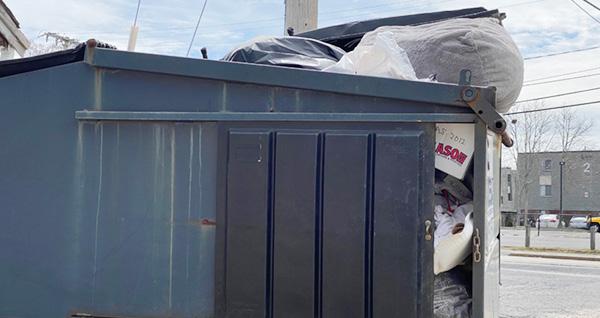
When delving into the issue of modern-day monopoly power, much of the recent global focus has been on the tech world – Google, Apple, Facebook and Amazon – but corporate concentration has also permeated the operations of one of our most basic essential services that we rely on for a clean community and a clean environment: rubbish removal.
Over the past five decades the $139 billion waste industry in the United States has gone from a vast network of
locally owned firms [41] who disposed of residential waste at municipal dumps to a centralized system dominated by heavily capitalized and publicly traded companies like Waste Management, Republic Services (formerly BFI), Advanced Disposal Services and Casella Waste Systems [42]. Unbeknownst to most people, these companies now not only control half of the hauling contracts in the United States, but they also control most of the facilities where our trash and recyclables end up: the landfills and
[43] .
By the beginning of the 21st century, the waste industry became known for its mergers, acquisitions, and consolidations, as the Big Waste companies gained more and more hauling market share. But the way in which they came to dominate the market is through vertical integration or acquiring other fundamental components of the waste industry – landfills - that allow them to gain further competitive advantage (and some who once only owned landfills are now getting into the hauling game [44]). Gone are the days of municipal ownership of landfills, yet the privatization of this service has negative implications for locally owned waste removal companies.
Ultimately, a trash hauler needs a place to put their trash, so they have no choice but to rely on their competitors to get rid of their materials, and they pay a premium to do it.
According to Jim Thompson of Waste Business Journal, as the landfills get scarcer (in 1985, there were approximately 8,000 landfills. Today, that number is closer to 1500), “the guys who own those landfills have a lot more power. They are the gatekeepers. And that power they could use to gain market share and force companies to sell out to them. That will be a further accelerant of the industry consolidation. [45]”
For a small hauler on Cape Cod, owning a landfill is simply not an option. It is an expensive and daunting process, permits are limited, and quite frankly, we are running out of space for this type of land use in the Northeast. Ultimately, a trash hauler needs a place to put their trash, so they have no choice but to rely
on their competitors to get rid of their materials, and they pay a premium to do it.
Landfill ownership not only enables big companies to charge their smaller competitors more for a large component of the process, but it also gives them a competitive edge in bidding for collection and hauling contracts against companies that have to pay disposal fees to landfills [46]. What’s more, they also have access to important information about their competitors’ business – the amount of trash a hauler disposes of directly relates to the number of and type of customers they have.
As this cost of business continues to increase, smaller companies have no choice but to charge more for their
service. This leaves them vulnerable to their larger corporate competitors who can keep their prices low to attract customers and government contracts. Once the large corporation has put the smaller competitor out of business and established market dominance in an area, they can then raise their prices; the people in that community have no other choices left, so they must accept it.
Thank you to Shawn DeLude from Nauset Disposal for the time and insight he provided for this sector study. To read more from our interviews with them visit lovelivelocal.com/corporate-consolidation.
Independent pharmacists serve as our country’s most accessible healthcare providers, they dispense medications, provide immunizations, and offer conveniences like home delivery. Studies show that independent pharmacies outperform their corporate chain counterparts in many ways: they provide more one-on-one consultation with patients, shorter wait times, and lower prices. They also support their communities in a deeper way: Massachusetts is home to 169 independent community
pharmacies that, like other local businesses, keep more of their earnings in the local economy - an estimated $517 million annually [47] .
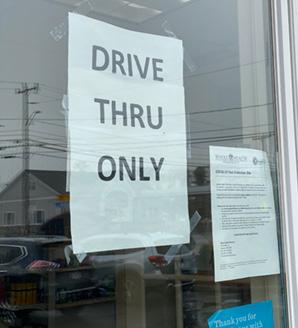
Unfortunately, like so many other types of locally owned businesses, the survival of many community pharmacies is under threat, even as they continue to provide an essential service and the healthcare industry in the United States continues its substantial growth. Many independent pharmacies point to the questionable practices of pharmacy benefit managers (PBMs) as one of the reasons they are struggling to make a living let alone a profit in their business any longer [48] .
PBMs are the little-known corporate middlemen between drug companies, insurance companies and pharmacies, and they have a huge impact on the US healthcare system. Ultimately, they negotiate with drug manufacturers to determine the price that health plans pay for a prescription and reimburse pharmacies on behalf of the plan. The three largest PBMs control 76% of the market, and cover over 76% of insured Americans, and the largest PBM, CVS
Caremark, also happens to control the largest pharmacy chain in the country.
For years not only have PBMs placed stringent accreditation and certification requirements on pharmacies, but they have also reduced the amount of money reimbursed to the pharmacy by the insurance company for prescriptions they have filled. Another point of contention is Direct and Indirect Remuneration (DIR) fees, a post point of sale transaction fee paid by pharmacies to health plans and PBMs for participation in Medicare Part D. These fees have skyrocketed by 1,600% in the last five years [49] .
Between June 2018 and July 2019 over 2,200 independent pharmacies went out of business in the U.S. and many of these pharmacies cite PBMs as the number one reason as to why they had to close.
PBMs have also been found to be enlarging their bottom lines even more by billing state plans a much higher amount than what they paid for a drug (essentially fleecing taxpayers), as well as getting kickbacks (they call
them rebates) from drug companies to include them in their catalog of available medications[50] .
However, small pharmacies have no choice but to deal with them as they ultimately dictate where a patient can get their prescriptions, and they often exclude pharmacies not willing to operate on their terms. Pharmacists are also not allowed to tell their patients any of this unless they are asked.
All these anti-competitive behaviors have put the PBMs in a perfect position to increase their market share [51] by driving more and more of the business to their own pharmacies and decrease the income to community pharmacies to the point where they are willing to sell or go out of business altogether [52] . Between June 2018 and July 2019 over 2,200 independent pharmacies went out of business in the U.S. and many
of these pharmacies cite PBMs as the number one reason as to why they had to close [53] .
As independent pharmacies have closed across the country and corporations have consolidated their operations to fewer establishments in both rural and urban areas, it has led to what have been called pharmacy deserts, where people find it hard to get their prescriptions and consult with a medical professional who is integral to their overall healthcare.
Thank you to Karryn Lewis, owner of Whole Health Pharmacy for the time and insight she provided for this sector study. To read more from our interviews with them visit lovelivelocal.com/ corporate-consolidation.
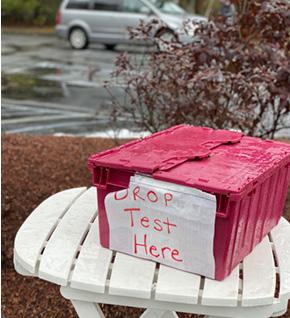
this storyline leaves out some key points involving corporate power and concentration.
In spite of the inherent value to their communities, thousands of local news entities have closed across the country over the past 15 years [54], and of those that have survived many have laid off reporters, reduced coverage, and pulled back circulation, taking with them a diverse set of voices and viewpoints necessary for a healthy and functioning democracy. Like many local business sectors that have started to see their numbers sharply decline, there is a pervasive narrative that local news outlets just cannot compete with their more modern counterparts, however
The birth of the internet and the onslaught of digital media was a distinct turning point for the local news industry. Not only did free sites like craigslist siphon off their classified ad sales, but more recently search engines like Google and social media sites like Facebook have caused a significant drop in advertising revenue. These platforms distribute and use the content news entities spend a lot of money to create (providing extensively researched, fact-checked and well-written news is very expensive) to add value to their product and then run their own digital ads right beside it. It’s quite the predicament: the publishers have no choice but to have an extensive presence on the very tech platforms that are threatening their existence, as many consumers have come to rely on them to get their news content.
This unchecked dominance of Facebook and Google in digital advertising, poses a particular challenge for local newspapers. While the two companies account for 58% of digital advertising revenue nationally, they account for 77% in local markets [55] .
The drop in revenues for newspapers that were already owned by newspaper chains, made them vulnerable for pur-

Like many local business sectors that have started to see their numbers sharply decline, there is a pervasive narrative that local news outlets just cannot compete with their more modern counterparts, however this storyline leaves out some key points involving corporate power and concentration.
chase by private equity firms. Traditionally, private equity firms use investors’ money to purchase a failing business to restructure it, cut costs and make it profitable once more, giving shareholders a return on their investment. The trend in newspapers was no different. Essentially, firms like Gatehouse acquire a newspaper property and strip it to the bone by cutting staff, consolidating services with their other holdings, selling their buildings, getting rid of pension plans where possible, and extracting as much cash from remaining loyal subscribers and local business advertisers as possible [56]. Sometimes, the plan includes borrowing against the newspaper, charging for their own management fees, and then sticking the debt on the newspaper’s balance sheet.Then they declare bankruptcy, reorganize, and
start over again, without any form of oversight.
Cape Cod has always been home to a thriving local news scene with many towns having more than one local news source. However, it has not been immune to the trends that many counterparts have faced. The only regional daily paper the Cape Cod Times and weeklies like the Provincetown Banner, The Barnstable Patriot and The Cape Codder are now owned by Gatehouse, whose merger with Gannett in late 2019 made it the largest newspaper chain in the country retaining 1 out of every 6 newspapers in their catalog [57]. Although these local newsrooms have kept some of their talented and dedicated staff, they have not been immune to the significant cost cutting and consolidation measures noted above.
Strong, substantive, and straightforward news sources are needed at both the national level and local level. Not only do local news outlets reflect and connect the community in which they reside, telling the stories of the local area, but robust local news drives voter turnout, holds officials and corporate leaders accountable, and in fact, studies have shown that when local journalism disappears, government costs increase [58] .
Thank you to Bill Hough from the Enterprise Newspapers, Alan Pollock from the Cape Cod Chronicle, Ed Miller of the Provincetown Independent and Greg Bone from Cape Cod Broadcasting for the time and insight they provided for this sector study. To read more from our interviews with them visit lovelivelocal. com/corporate-consolidation.
The harms and instabilities created by the corporate consolidation this research reveals are many, as are the reasons behind it; and both policy makers and consumers play a role in mitigating the impacts on small businesses and local communities.
Strengthening and sustaining our local economies will require a policy environment at the federal, state, and local that encourages competition and levels the playing field for small businesses. The United States has a long history of passing legislation meant to preserve competition and reduce concentrations in market sectors. For example, the Robinson-Patman Act passed in 1936 was intended to preserve the viability and diversity of smaller retailers by ensuring that the big chain stores did not engage in price discrimination and other unfair business practices by making it illegal for suppliers to charge small retailers more than they charge the big chains for the same product.
But since the early 1980s the federal agencies that enforce the antitrust laws, have taken a hands-off approach and given corporations like Walmart
and Amazon the freedom to use their size and financial power, and no other competitive skills, to consolidate and concentrate markets.
Additionally, if we want the local businesses in our communities to stick around and keep Cape Cod unique and economically viable, it is up to consumers to think and buy local first when making purchases for both goods and services.
• Congress, the Department of Justice and the Federal Trade Commission should pursue effective and timely antitrust enforcement that promotes and protects competitive markets, including by ensuring a level playing field and preventing large competitors from acting to disadvantage smaller rivals.
• The Federal government’s Antitrust Division can and should ensure that outsized companies do not get any larger by banning or scrutinizing mergers, acquisitions, and vertical integration.
• Congress and the Department of Justice should limit the level of influence corporations have in government through campaign finance reform and more transparency in lobbying.
▫ According to democracy advocacy group Common Cause, in the 116th Congress alone, cable and internet corporations spent $234 million on lobbying and federal elections – an average of more than $320,000 a day.
• The United States Department of Agriculture can have a huge influence when it comes to the needs of smaller farming communities. The USDA is a large purchaser of food (buying for schools, prisons, the military, and food banks) and they could decentralize the current system of purchasing which often excludes small producers.
• The federal government should focus on reviving some parts of the 1933 Glass-Steagall Act. To minimize risk and protect federally insured deposits, it prevented banks that accepted deposits from also acting as investment banks under the same roof. This
would mean splitting up behemoth conglomerates that engage in both investment and commercial banking and would help solve the “too-big-tofail problem.”
• To keep community banks viable, the federal government needs to regulate banks in a way that is tiered and proportionate to the size, market, risk level and business model.
• The federal government can play a key role in assisting municipalities with broadband financing options such as subsidies, one-time grants, or loans.
• The Federal Trade Commission should break Pharmacy Benefit Managers off as independent businesses, so that there are no conflicts of interest in drug pricing.
• Private equity firms, which are buying up assets in many economic sectors like newspapers and farms, should be required to provide more transparency and their ability to file bankruptcy should be limited.
• Federal legislators should endorse efforts that encourage investment in local media through federal tax credits for consumers, businesses, and news organizations themselves.
• The Massachusetts Attorney General’s office should launch investigations into large companies and chain ownership for violations of Massachusetts’ consumer protection laws and for unfair and deceptive business practices.
• The State of Massachusetts should eliminate corporate subsidies for large companies. Research has shown there are very few, if any, benefits to subsidies, and in most cases, corporations would have done what they used taxpayer money to do anyway.
• State offices can prioritize small businesses and producers when making purchases for state agencies and institutions.
• Massachusetts legislators can continue to expand “right to repair” laws, enabling farmers to have their farm equipment repaired and updated by independent mechanics and not be required to go to the manufacturers.
• State governments can also limit the number of subsidies doled out to large agribusinesses, prioritizing local businesses instead.
• The Massachusetts State Legislature should place a permanent cap on
third-party app delivery fees.
• State legislatures can create a supportive environment for community broadband networks by removing any laws that might discourage their formation or favor large providers, ensuring that local governments have the authority to issue bonds for broadband projects, offering programs that help them access the capital markets, or giving grants to help determine feasibility and planning of local projects.
• The state government can limit the number of hauling licenses and landfill permits one company can have throughout the state to encourage competition.
• Pharmacy Benefit Managers are incredibly secretive about their pricing model, therefore state law should require more transparency, clarification, and regulation of pharmacy benefit managers.
• State legislators should encourage efforts to study journalism in underserved communities and the impact of chain ownership on them.
• Local governments should stop all use of corporate subsidies. Giving tax breaks and incentives to large corporations puts small, local businesses at a distinct disadvantage, despite generating more wealth for their community overall. Research has shown there are little to no positive economic outcomes to giving away taxpayer money to corporations to incentivize them to set up shop in a community.
• Local governments can institute zoning ordinances to encourage the proliferation of locally owned businesses and provide funding mechanisms to support their continued growth.
• Rather than prescribing to a “bigger is better” attitude” local governments should foster and support the locally owned and mission-driven companies like those on Cape Cod by making purchases for local agencies and institutions with local businesses and producers whenever possible.
• The Barnstable County government, along with our local towns can develop a countywide plan to increase the availability and opportunity for locally grown, caught, and raised food.
• Municipal and regional entities should
foster and support conversations around community broadband networks, as well as instating a “dig once policy” where conduits for fiber networks are laid during construction projects happening now to prepare the community for the technology and save on costs for future projects.
• They can also gather data on the present level of broadband service being provided to their constituents, including network speeds and price points.
• When possible, municipalities should maintain local ownership of landfills or require more transparency about pricing and disposal policies from those that are privately held.
• Advocate for the measures outlined above with your representatives in federal, state, and local government.
• Seek out information about how and where to buy local from organizations like the Cape Cod Commercial Fishermen’s Alliance, Buy Fresh Buy Local Cape Cod and Love Live Local.
• Be careful not to fall into the trap of thinking local always means “more expensive.” Many items are offered by local stores at a price competi-
tive to their corporate counterparts (and sometimes they’re even less expensive!).
• Support restaurants by ordering directly from them whenever possible, or by using local delivery services if available.
• Bank with Cape Cod based financial institutions. The more deposits and loans that are made in a community financial institution, the more the bank can reinvest in the community in the form of small business loans, mortgages, employee wages, support for other local businesses, and support for local nonprofits and organizations.
Thanks to the support from Love Live Local’s Mission Supporters. We are incredibly grateful to them and their dedication to our mission and to supporting Cape Cod small businesses.
OUR THANKS TO THE FOLLOWING CONTRIBUTORS TO THIS REPORT
Greg Bone, Cape Cod Broadcasting
Mark Corliss, Old King’s Coffeehouse
Shawn Delude, Nauset Disposal

Bill Hough, Enterprise Newspapers

Bert Jackson, Cape Cod Technology Council
Brian Junkins, Friends Marketplace
Monila Junkins, Friends Marketplace
Denice Lapierre, F/V Isabel and Lilee
Karryn Lewis, Whole Health Pharmacy
Ed Miller, Provincetown Independent
Gretel Norgeot, Checkerberry Farms and the Orleans Farmers Market
Crystal Pieschel, Mid-Cape Home Centers
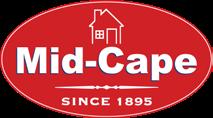
Alan Pollock, Cape Cod Chronicle
Seth Rolbein, Cape Cod Commercial Fishermen’s Alliance
Dorothy Savarese, Cape Cod 5
Barbara Smith, The Cooperative Bank of Cape Cod

Sid Snow, Snow’s Home & Garden
Bert Talerman, Cape Cod Five
Jen Villa, The West End and The Local Juice
Designed by Tim Graham
timgrahamdesign.com
1. Monopoly by the Numbers. Open Markets Institute, openmarketsinstitute.org/learn/monopoly-by-the-numbers.
2. Ibid.
3. “Top 10 Highly Concentrated Industries.” IbisWorld, February 10, 2012, news.cision.com/ibisworld/r/top-10-highlyconcentrated-industries,c9219248.
4. Monopoly by the Numbers. Open Markets Institute, openmarketsinstitute.org/learn/monopoly-by-the-numbers.
5. Mitchell, Stacey, Susan Holmberg and Zach Freed. America’s Monopoly Problem: How States and Cities Can Beat Back Corporate Control and Build Thriving Communities, Institute for Local Self Reliance, July 2020.
6. Dayen, David. “America’s Monopoly Problem Goes Way Beyond the Tech Giants.” The Atlantic, July 28, 2020.
7. Tech Transparency Project. “Big Tech’s Go-To Defense: Hiding Behind Small Business.” July 1, 2021, techtransparencyproject.org/articles/big-techs-go-todefense-hiding-behind-small-business.
8. Stoller, Matt. “Counterfeit Capitalism: Why a Monopolized Economy Leads to Inflation and Shortages.” September 9, 2021, mattstoller.substack.com/p/counterfeit-capitalismwhy-a-monopolized.
9. American Economic Liberties Project. “Break ‘Em Up! Redistributing Economic Power to the People feat. Senator Bernie Sanders, Congressman Cicilline & More.” YouTube, December 15, 2020, economicliberties.us/event/break-emup-redistributing-economic-power-to-the-people.
10. Mitchell, Stacey. Report: Walmart’s Monopolization of Local Grocery Markets. Institute for Local Self Reliance, June 26,2019, par. 1, ilsr.org/walmarts-monopolization-of-localgrocery-markets.
11. “Harms of Big Box Retail.” Good Jobs First, par. 4,
goodjobsfirst.org/smart-growth-working-families/harmsbig-box-retail.
12. Mitchell, Stacey and Ron Knox. Fact Sheet: How Amazon Exploits and Undermines Small Businesses, and Why Breaking It Up Would Revive American Entrepreneurship. Institute for Local Self Reliance, June 16, 2021, par. 7, ilsr.org/ fact-sheet-how-breaking-up-amazon-can-empower-smallbusiness.
13. Ibid, par. 6
14. Thomas, Lauren. “More retail pain ahead: UBS predicts 80,000 stores will close in the U.S. by 2026.” CNBC, April 5, 2021, cnbc.com/2021/04/05/store-closures-ubs-predicts80000-stores-will-go-dark-by-2026.
15. Takefman, Bruce. Amazon profits increased nearly 200% since start of COVID-19 pandemic. Research FDI, January 6, 2021, researchfdi.com/amazon-covid-19-pandemic-profits.
16. Mitchell and Knox. Fact Sheet: How Amazon Exploits and Undermines Small Businesses, and Why Breaking It Up Would Revive American Entrepreneurship. Institute for Local Self Reliance, June 16, 2021, ilsr.org/fact-sheet-howbreaking-up-amazon-can-empower-small-business.
17. Local Matters: Measuring Impact. Love Live Local, August 2020, lovelivelocal.com/localmatters
18. Holmberg, Susan and Zach Freed. “Food and Farming.” America’s Monopoly Problem: Why It Matters and What We Can Do About It, Institute for Local Self Reliance, July 2020.
19. Food and Power: Addressing Monopolization in America’s Food System, Open Markets Institute, March 27, 2019, openmarketsinstitute.org/publications/food-poweraddressing-monopolization-americas-food-system.
20. Ibid
21. Moss, Diana and Rob Larew. “Don’t Stop at Big Tech – We Need to Bust Big Agriculture, Too.” Modern Farmer Highlights
AAI-NFU Op-Ed, American Antitrust Institute, February 3, 2021.
22. Holmberg, Susan and Zach Freed. “Food and Farming.” America’s Monopoly Problem: Why It Matters and What We Can Do About It, Institute for Local Self Reliance, par. 3, July 2020.
23. Ibid, par. 15
24. Moss and Larew. “Don’t Stop at Big Tech – We Need to Bust Big Agriculture, Too.” Modern Farmer Highlights AAI-NFU OpEd, American Antitrust Institute, February 3, 2021.
25. Tkacik, Maureen. Rescuing Restaurants: How to Protect Restaurants, Workers, and Communities from Predatory Delivery App Corporations. American Economic Liberties Project Working Paper, September 2020,economicliberties. us/wp-content/uploads/2020/09/Working-Paper-Series-onCorporate-Power_7.pdf
26. Tkacik, Maureen. “Restaurants are barely surviving. Delivery apps will kill them.” The Washington Post, May 29, 2020.
27. Perry, Janine. “Which company is winning the restaurant food delivery war?” Bloomberg Second Measure, November15, 2021.
28. Wiener-Bronner, Danielle. “Some restaurants hate delivery apps like Grubhub and Uber Eats. So they’re seeking out alternatives.” CNN Business, December 1, 2020.
29. Smith, Kennedy. Special Delivery. Institute for Local Self Reliance, May 2021, ilsr.org/wp-content/uploads/2021/05/ ILSR_SpecialDelivery_Final.pdf
30. Tkacik, Maureen. Rescuing Restaurants: How to Protect Restaurants, Workers, and Communities from Predatory Delivery App Corporations. American Economic Liberties Project Working Paper, September 2020,economicliberties. us/wp-content/uploads/2020/09/Working-Paper-Series-onCorporate-Power_7.pdf
31. Mitchell, Stacey. One in Four Local Banks Has Vanished since 2008. Here’s What’s Causing the Decline and Why We Should Treat It as a National Crisis. Institute for Local Self Reliance, May 5, 2015, ilsr.org/vanishing-community-banks-nationalcrisis.
32. Abello, Oscar Perry. Small Banks Save Small Businesses, So Why Aren’t There More Small Banks? Next City, May 12, 2020, nextcity.org/urbanist-news/entry/small-banks-save-smallbusinesses-so-why-arent-there-more-small-banks.
33. Mitchell, Stacey and Susan Holmberg. “Banking.” America’s Monopoly Problem: Why It Matters and What We Can Do About It, Institute for Local Self Reliance, July 2020.
34. Broadband Gatekeepers. How ISP Lobbying and Political Influence Shapes the Digital Divide. Common Cause, commoncause.org/wpcontent/uploads/2021/07/ CCBroadbandGatekeepers_WEB1.pdf
35. Buell, Mark. “Time is ticking on broadband infrastructure.” The Hill, August 13, 2021.
36. Mitchell, Christopher. “Broadband Internet Access.” America’s Monopoly Problem: Why It Matters and What We Can Do About It, Institute for Local Self Reliance, July 2020.
37. Ibid.
38. CCG Consulting. “Feasibility Report for a Community Network.” A report commissioned by the Falmouth Economic Development and Industrial Corporation, November 16, 2020.
39. Ibid.
40. What Fiber broadband Can do For Your Community. A Fiber-To-The-Home Primer from the Editors of Broadband Communities, Fall 2017, bbcmag.com/pub/doc/bbc-primerfall2017.pdf.
41. Seldman, Neil and David Morris. “How Waste Monopolies are Choking Environmental Solutions, and What We Can Do About It.” America’s Monopoly Problem, December 2020, ilsr. org/wp-content/uploads/2020/12/SLPG_Waste.pdf.
42. Rosengren, Cole and Rina Li. “10 insights from public waste company 10-Ks.” Waste Dive, March 18, 2019.
43. Seldman and Morris. “How Waste Monopolies are Choking Environmental Solutions, and What We Can Do About It.” America’s Monopoly Problem, December 2020, ilsr.org/wpcontent/uploads/2020/12/SLPG_Waste.pdf.
44. “Covanta SEMASS Partners with Yarmouth, MA to Provide Bundled Sustainable Waste Management Services and Transfer Station Operation.” Market Screener, December 30, 2013.
45. Rosengren, Cole. “Disposal capacity crunch paves way for more industry consolidation and price increases, per report.” Waste Dive, January 8, 2020.
46. Seldman and Morris. “How Waste Monopolies are Choking Environmental Solutions, and What We Can Do About It.” America’s Monopoly Problem, December 2020, ilsr.org/wpcontent/uploads/2020/12/SLPG_Waste.pdf.
47. National Community Pharmacists Association. Massachusetts Fact Sheet, 2019, ncpa.co/pdf/state/ Massachusetts.pdf.
48. Dayen, David. “The Hidden Monopolies That Raise Drug Prices.” The American Prospect, March 28, 2017, prospect. org/health/hidden-monopolies-raise-drug-prices.
49. National Community Pharmacists Association. “Policy Alert. Payers and PBMs Profit from Obscure Pharmacy Fees, While Seniors See No Relief in Prescription Costs.” ncpa.org/sites/ default/files/2021-01/xil-consulting-dir-analysis.pdf.
50. Sullivan, Lucas and Catherine Candisky. “‘Cost-cutting’
middlemen reap millions via drug pricing, data show.” Side Effects. An Ongoing Investigation on the Rising Costs of Prescription Drugs. Columbus Dispatch, 2020.
51. Freed, Zach. “Reining in Pharmacy Middlemen.” Institute for Local Self Reliance, ilsr.org/rule/reining-in-pharmacymiddlemen.
52. Schladen, Marty. “Walgreens buys and shuts small chain, continuing to shrink Ohio options.” Side Effects. An Ongoing Investigation on the Rising Costs of Prescription Drugs. Columbus Dispatch, 2020.
53. Blank, Christine. “Independents Prepare to Close Up Shop.” Drug Topics, Voice of the Pharmacist, October 17, 2019.
54. Hendrickson, Clara. “How the Gannett/GateHouse merger could deepen America’s local news crisis.” Brooking Institution, November 18, 2019, brookings.edu/blog/ fixgov/2019/11/18/how-the-gannett-gatehouse-mergercould-deepen-americas-local-news-crisis.
55. Ibid.
56. Kuttner, Robert. “Private Equity Swallows Up Yet Another Newspaper Group.” The American Prospect, February 17, 2021, prospect.org/blogs/tap/private-equity-swallows-upyet-another-newspaper-group.
57. Associated Press. “GateHouse, Gannett merger is official, creating largest U.S. newspaper chain.” MarketWatch, November 19, 2019.
58. “Losing the News. The Decimation of Local Journalism and the Search for Solutions.” PEN America, November 20, 2019, pen.org/wp-content/uploads/2019/12/Losing-the-NewsThe-Decimation-of-Local-Journalism-and-the-Search-forSolutions-Report.pdf.